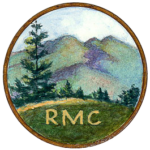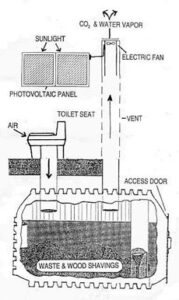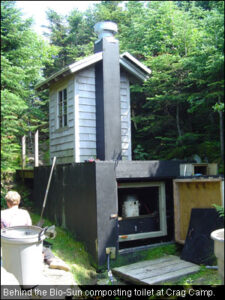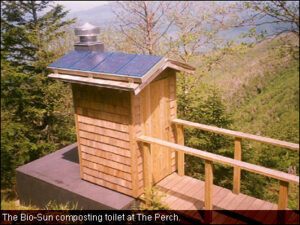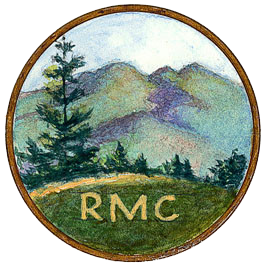RMC’s Composting Toilet Systems in Use at our Camps and Shelters
RMC uses composting toilet systems to help protect the sensitive backcountry environments where our camps are located. These toilets are designed to optimize conditions for oxygen-using decomposing organisms to break down human waste into an inoffensive earth like substance (humus). The process of transforming raw waste into finished compost results primarily from soil microbes such as bacteria, fungi, and actinomycetes. Soil invertebrates such as springtails, mites, millipedes and beetles also contribute to waste decomposition. Disease-causing organisms (pathogens) found in human waste are eliminated due to the presence of oxygen, natural antibiotics, and high temperatures that result from the competition between organisms as they consume available nutrients within the compost pile.
The essential ingredients of a well-functioning compost pile are organic material, microorganisms, moisture, oxygen, and heat. As air is introduced to the pile through mixing by RMC Caretakers, the aerobes consume nutrients and the volume of the waste is reduced as some mass is converted to carbon dioxide and water vapor. Adding hardwood bark mulch increases the amount of carbon, absorbs moisture and odors, and provides air space and structure within the pile. Unlike some composting toilet systems (moldering privies), it is all right for users to urinate into this system. Garbage, however, interferes with the composting process and must be kept out or removed by the caretaker. Guests are asked to put nothing but human waste and toilet paper (not wipes) into the toilet. Feminine hygiene products must be packed out.
The toilet seat is situated over a sealed bin where the waste is collected. Urine is drained from the tank and filtered by a Beyond the Bin system that cleans it and then releases it back into the soil. When the collection bin under the seat is full, the caretaker will transfer the waste from this collection bin in to one of two storage cans. When the two storage cans are full and the collector under the seat is full, RMC field staff will then mix this waste with additional bark mulch and start a compost run. Staff will add oxygen to the process by mixing the pile every few days over the course of four to six weeks. During that time the pile temperature will rise well over a hundred degrees which helps to kill pathogens. Once the compost run is completed the material will be transferred onto a drying rack where it will continue to cure and finish before finally being returned to the nearby forest floor to become part of the soil. Each RMC camp will have one to two compost runs a year during the 13 week window when the temperatures will permit composting to occur.
The RMC appreciates your interest in our composting toilet systems. For more information on backcountry sanitation and the history and evolution of RMC’s toilet systems please see the Backcountry Sanitation Manual available from the Appalachian Trail Conservancy’s website. We would like to thank our partners at the Appalachian Trail Conservancy and the U.S. Forest Service for their support of RMC’s backcountry sanitation efforts. If you have any questions about our backcountry facilities, please contact RMC’s Camps Chair.
